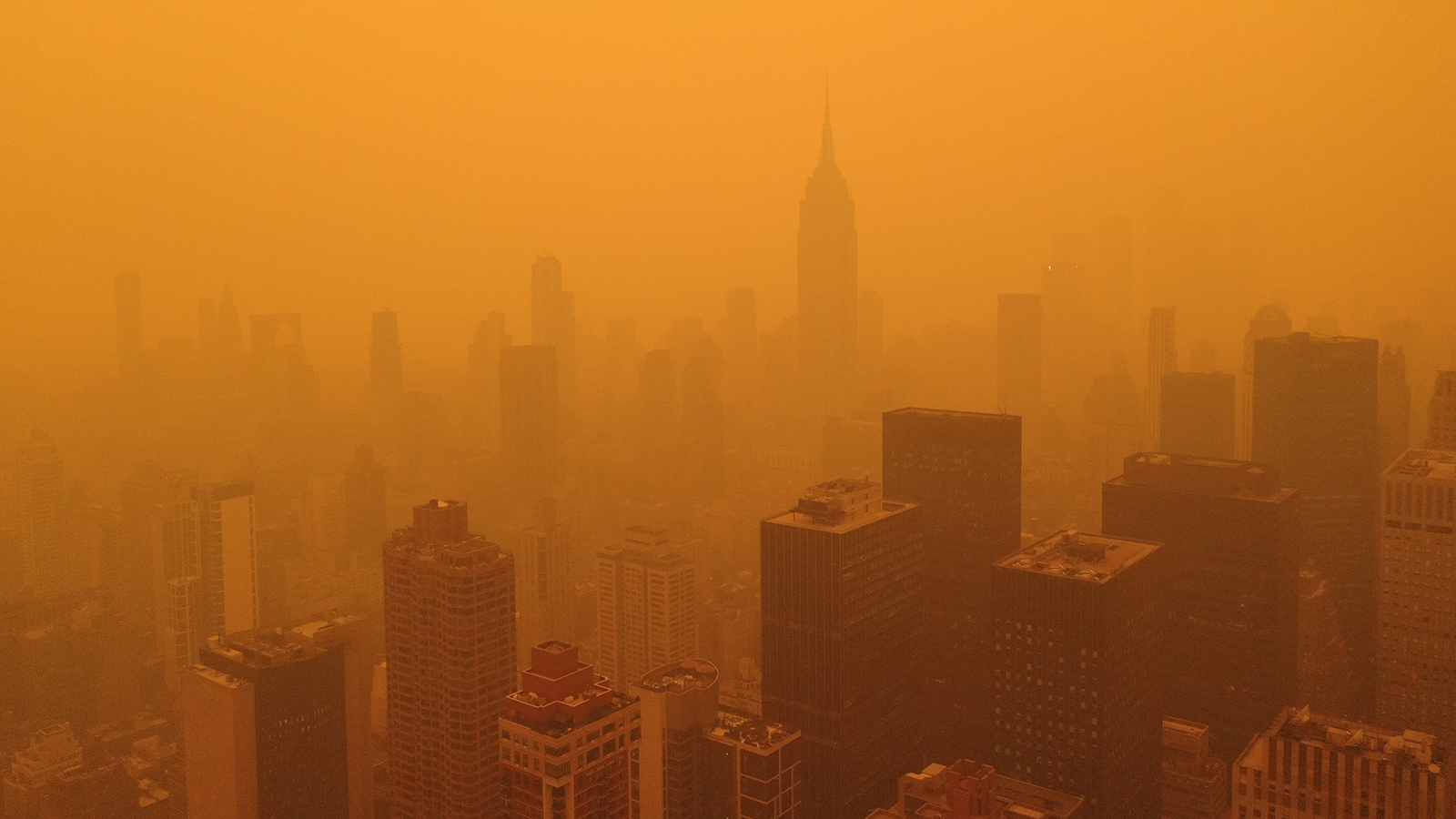Starting in March 2023, Canada burned for eight months, with flames licking all 13 provinces and territories in the country’s deadliest ever fire season. At least 150,000 people evacuated, and tens of millions across North America were affected by the drifting smoke. In New York, residents experienced the worst air quality in half a century.
Five months later, Greece was besieged by the European Union’s largest blaze yet, which claimed almost 350 square miles of forests and took the lives of 19 immigrants. Near the equator, the Amazon experienced a record-breaking number of fires. For months, satellite images showed thick plumes of smoke shrouding entire countries and swaths of charred land, their perimeter accented by flares of highlighter-orange flames.
We can thank climate change for these unprecedented conflagrations. On Tuesday, an international group of scientists released State of Wildfires, an annual report that analyzed global wildfires between March 2023 and February 2024, concluding beyond doubt that climate change intensified the conditions that fueled the flames. According to the report, last year’s wildfires in Canada, Greece, and the Amazon were at least three times more likely — and up to 20 times more likely — than they would have been without human-caused planetary warming.
The scientists also found that all this burning generated a staggering 8.6 billion metric tons of carbon dioxide — 3 billion more than the U.S. emitted by burning fossil fuels in 2022.
“This release of greenhouse gases … creates a positive feedback loop that could then lead to more extreme fires,” said Douglas Kelley, a fire scientist at U.K. Centre for Ecology and Hydrology and one of the authors of the report. “So if we keep on putting out greenhouse gases in the same way we are now, we’ll see at least six to 11 times more of those fires by the end of the century.”
Lokman Vural Elibol / Anadolu via Getty Images
To understand how the changing climate stacked the odds, the researchers analyzed regional data to identify changes in fire weather — a term that describes the hot, dry, and often windy conditions that wildfires can easily start in. Climate and ecological factors, such as changes in rainfall or overgrowth of plants, can make environments more flammable. Add in drought and heat waves, both of which are exacerbated by climate change, and fire weather becomes more extreme.
But these conditions only mean that a large fire could easily ignite and spread — not that it necessarily will. According to Kelley, even with a good understanding of risk, predicting the next extreme fire remains a tricky business, in part, because human behavior can make a big difference.
“People go out and start fires, or they can put fires out,” Kelley said. “And although climate change has led to changes in fires, so has the human fragmentation of the landscape.” In some places, agriculture and roads block fires from spreading as far. In others, deforestation can make forests drier, and provide fuel for them to burn more. And in the U.S., decades of bad forest management set the stage for extreme fires by suppressing naturally occurring ones, allowing the landscape to become a tinderbox of overgrown vegetation.
Because each area is uniquely complex, the researchers focused their analysis on three distinct regions that had large wildfires with robust data available: Canada, Greece, and the Amazon.
In Canada, the incineration of over 50,000 square miles of boreal forest spewed roughly a quarter of the world’s total CO2 emissions in the yearlong study period. Overall, the report found that the warming planet made the Canadian fires three times more likely. But the researchers also note that if Canada’s landscape hadn’t been altered by people, through agriculture, fire management, and urban infrastructure, the damage would have been even more widespread. In Greece, similar factors prevented the 2023 Evros fire from being worse than it was.
Gustavo Basso/NurPhoto via Getty Images
Among all the regions examined in the report, the rainforests of Amazonia — covering Brazil’s Amazonas state and neighboring sections of Bolivia, Peru, and Venezuela — seem to bear the greatest influence from climate change. Here, the researchers found a 20 times greater likelihood of severe wildfires. And in 2023, a particularly strong El Niño, a multi-year climate pattern influenced by the cycling of warm ocean currents, contributed to a record-breaking fire season.
“El Niño makes it harder for rain to form in the Amazon, causing drier and hotter weather,” said Maria Lucia Barbosa, a fire researcher at the University of São Carlos, Brazil, and one of the authors of the study. “When people use fire, it easily spreads under these conditions.” According to the report, the fires also came at a heavy cost to dozens of Indigenous nations that live in the area, who depend on a healthy forest for their livelihoods.
The State of Wildfire report also discussed damage from other notable fires during the study period, although not in the same depth. In Hawaiʻi, the town of Lahaina was destroyed in an August inferno that took 102 lives. In Australia, more than 300,000 square miles burned through the Southern Hemisphere’s summer — making it the largest bushfire season in more than a decade. In Chile, hundreds of fires broke out in the midst of a megadrought. Globally, the report found that climate change made extreme fires twice as likely. A separate analysis of satellite data released in June found that extreme wildfires have become twice as frequent and intense over the last two decades.
“In our lived experience, we’re seeing things that were predicted decades ago,” said Maureen Kennedy, an associate professor of fire ecology at the University of Washington, Tacoma, who was not involved with the State of Wildfires report. She says that the report’s findings are in line with what she considers to be “classic hallmarks” of a warming planet.
“Climate change is loading the dice in favor of extreme fire weather that makes it really hard to fight wildfires and really hard to suppress them,” she said.
Although the State of Wildfires researchers found that the likelihood of such extremes will continue to rise through the end of the century, Kelley and McNorton say humanity still has time to create a better outcome.
“I think that’s the hopeful, if not slightly scary, part of the future projections,” Kelley said. Although there will still be an increase in extreme fire no matter how much we limit our emissions, it’s still possible to limit how severe the situation becomes, he said.
This story was originally published by Grist with the headline Climate change fueled last year’s extreme wildfires — some more than others on Aug 15, 2024.
If emissions aren’t curbed, extreme wildfires could become six to 11 times more likely by the end of the century. Climate, Science, Wildfires Grist










